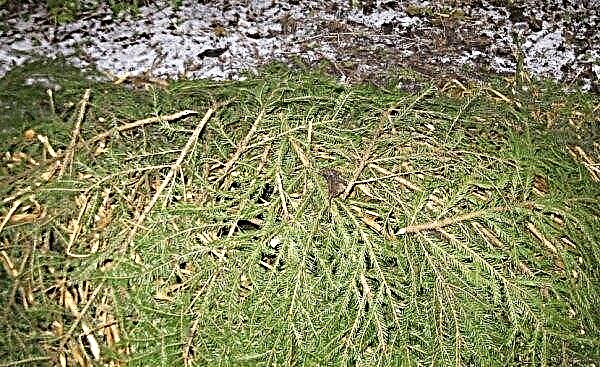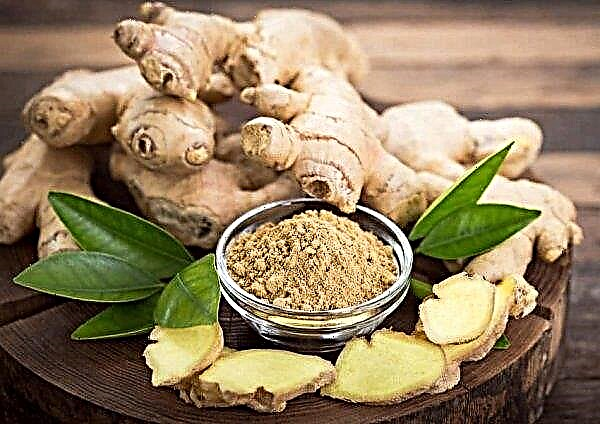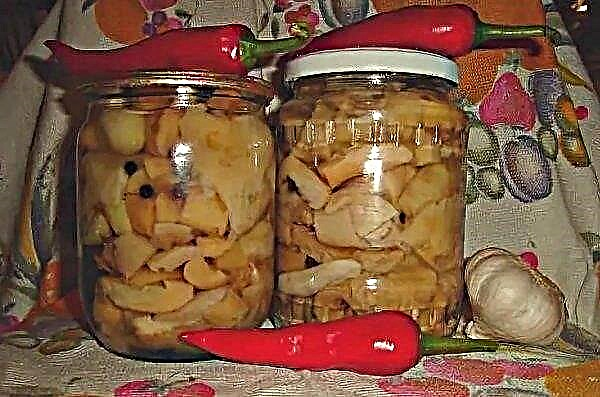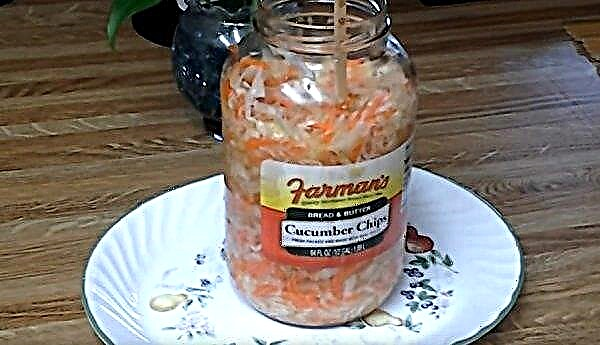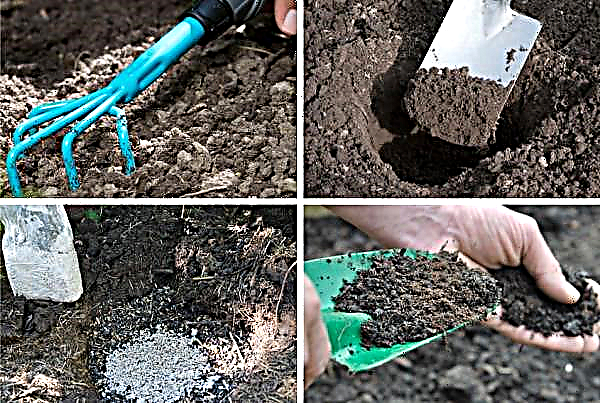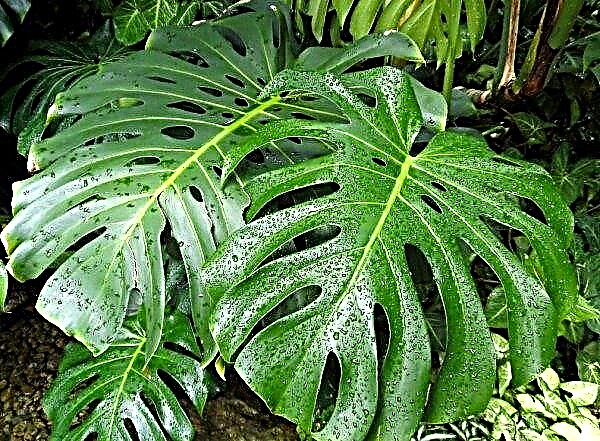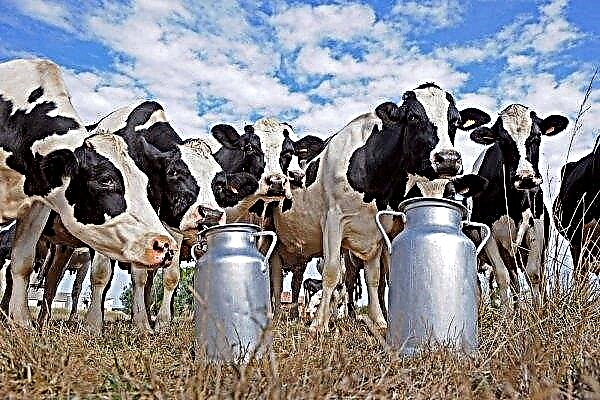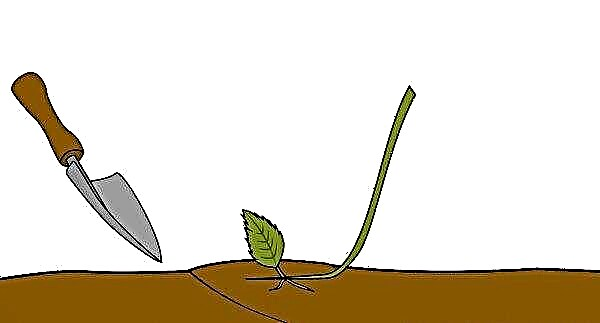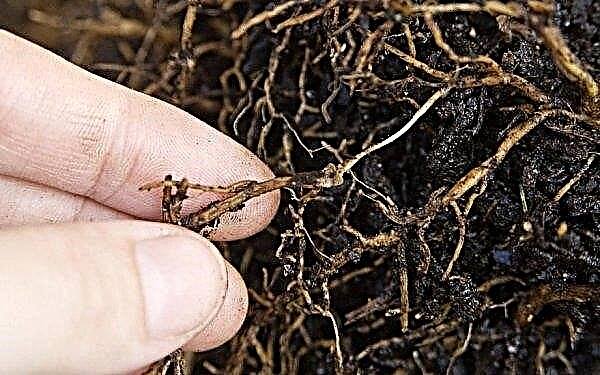Carrot varieties belonging to the Nantes variety are one of the most popular, and have been loved by vegetable growers for decades. Based on this type of carrot, a large number of varieties are bred. Consider the characteristics of carrots of the Nantes variety, its pros and cons, how to grow, collect and store.
Description and characteristics of the variety
Thanks to its features, the Nantes carrot variety successfully competes with many popular Dutch hybrids.
History of creation
The variety Nantes (Nantes 4) was bred in the 30s of the last century on the basis of seed material from the French city of Nantes. From here its name went. The variety was bred by Moscow breeders, and in all regions where this carrot was tested, it showed its best side. It is not surprising that this variety of carrots is still in demand. It served as the basis for the creation of many varieties that belong to its variety.
Planting region and ripening dates
Carrots ripen in 80–100 days from the time of emergence of seedlings, but young root crops suitable for food can already be harvested from day 50. The culture is resistant to cold and can be grown in open ground in almost all regions.
Did you know? Orange carrots were bred only in the 17th century in the Netherlands. Before that, there were references to root crops of yellow, white, and purple flowers.
Variety Productivity
The yield of the carrot of the Nantes variety depends on the fertility and quality of the land in the beds. From each square meter, you can get from 2.5 to 6.5 kg of vegetables. Marketability of root crops is 78%.
Disease resistance
The carrot variety is resistant to many diseases. Sometimes there are rot of fungal origin - altenariosis and fomosis.
Pros and cons of the variety
- The advantages of Nantes carrots include:
- excellent palatability - juicy, sweet pulp with a high content of carotene;
- universality of the use of fruits;
- presentation of products - medium-sized and cylindrical fruits;
- excellent keeping quality;
- unpretentiousness - gives a crop in any regions.
- By cons include:
- gives high yields only under certain conditions (soil quality, watering, good lighting);
- some tendency to fungal diseases.
Did you know? Nutritionists recommend consuming at least 8.4 kg of carrots per year for an adult. This root crop, in terms of carotene content, is in second place after salad pepper.
Cultivation agricultural
To get the maximum yield of Nantes carrots, certain conditions must be observed.
Optimal conditions
Carrots need good lighting, it does not fit shady areas. The variety can grow and produce crops on different soils, but fertile soil and soil that are well permeable to air and moisture are better suited. It is a cold-resistant crop for temperate climates, whose seedlings in the spring can tolerate short-term frosts down to –4 ° С. The optimum temperature for seedlings is considered to be the interval + 9 ... + 15 ° С. When leaves are formed, the best temperatures will be + 15 ... + 20 ° С, and with the growth of root crops - + 13 ... + 18 ° С. When the temperature drops to + 10 ° C, carrots slow down growth and lose their bright color. Heat above + 30 ° C negatively affects the formation of the root crop and contributes to premature aging. Dry soil affects the taste characteristics, so you need to moisten the soil in time.
When the temperature drops to + 10 ° C, carrots slow down growth and lose their bright color. Heat above + 30 ° C negatively affects the formation of the root crop and contributes to premature aging. Dry soil affects the taste characteristics, so you need to moisten the soil in time.
Did you know? Carrots have been grown by mankind for 4 thousand years. According to scientists, it resembles from the territories of Afghanistan, where its many wild "relatives" grow.
Landing time
Nantes carrots can be sown in spring and before winter for fresh consumption and early production. To get the crop for winter storage, it is planted later - in May – June (depending on the region). Winter crops are carried out in persistently cold weather before long frosts so that the seeds can not germinate prematurely.
In the spring, the vegetable can be sown immediately after the snow has melted, and the probability of a return of minus temperatures below –5 ° C has passed. For the emergence of seedlings, a temperature of + 2 ... + 4 ° C is enough. It is better to do spring crops when the soil has warmed up to + 5 ° C, and frosts will not return. In the southern regions this can be done already in March – April. These dates are adjusted for weather conditions.
Choosing a place and preparing the garden
For planting, it is better to choose a sunny place where water does not stagnate in spring. The groundwater level should be no closer than 1.5 m. The best predecessors are legumes and melons, cabbage, onions, lettuce, potatoes, cucumbers and tomatoes. This culture can be planted on the same beds after at least 2 years. Parsnips, parsley, celery, dill, sunflower, beets, radishes and radishes are bad predecessors.
Important! Carrots are not sown in winter in harsh winters. It makes no sense to do winter crops in a climate with a prolonged thaw and the return of frost.
The optimal soils are chernozems, chestnut, peat, sandy and loamy soils with deep humus and acidity of 6.5–7.2 pH. Sand is added to heavy soils, too acidic soils are calcified, and poor soils are fertilized with organic matter. During autumn digging, well-rotted organic matter (2-3 kg per 1 m²) is introduced into the soil. Before planting, they dig a bed and loosen it well, remove roots and stones. You can form ridges.
Seed preparation and planting technology
When sowing under winter, the seed material is not processed and sown in prepared furrows without moisture, and then sprinkled with earth. Before spring-summer plantings, the seeds are soaked for 1–1.5 days for faster germination. With this soaking, it is better to take melt heated water. It can be mixed with ash. After soaking, you can use biostimulants (Epin, sodium gummat). They are dissolved according to the instructions and the seeds are soaked for another 10-12 hours. Etching with manganese is done only for moistened seeds, which are immersed for 15 minutes in a 0.01% solution of potassium permanganate. Some gardeners prefer to stick carrot seeds with a paste to the strips of toilet paper at a distance of 4-5 cm in advance.
They are dissolved according to the instructions and the seeds are soaked for another 10-12 hours. Etching with manganese is done only for moistened seeds, which are immersed for 15 minutes in a 0.01% solution of potassium permanganate. Some gardeners prefer to stick carrot seeds with a paste to the strips of toilet paper at a distance of 4-5 cm in advance.
This saves gardeners subsequently from thinning plantings. Carrot seeds can be mixed with sand to distribute them evenly. They are sparsely sown in furrows drenched with water to a depth of 2-3 cm, then they are sprinkled with earth, slightly trampled and again moisten the soil well.
Watering
After planting the seeds of the beds, it is necessary to water well every day for the first 14 days. Then it is enough to carry out the procedure once every 7-10 days. Humidification is largely dependent on weather conditions. If it rains, stop watering or spend less.
Important! Insufficient watering leads to the fact that carrots crack and acquire bitterness.
So that the soil does not dry out, it can be mulched. As mulch use mowed grass, hay, sawdust. It is laid out between rows of landings.
Fertilizer application
To get a good harvest, it is necessary to feed. Over the entire growing season they are carried out at least two times.
For top dressing, the following fertilizers are used per 1 m²:
- 10 g of urea;
- 15 g potassium salt;
- 25 g superphosphate.
The first top dressing is carried out when 3-4 leaves appear. The second top dressing is carried out at the end of July.
Thinning
When the sprouts reach 20 cm, thinning is performed. Between shoots leave about 4 cm, the rest of the vegetation is removed. This will allow vegetables to grow larger, otherwise the fruits will be small, as they will not allow each other to develop.
Diseases and pests
Nantes carrots are resistant to many diseases.
In case of violation of agricultural farming techniques, the following diseases may appear:
- Fomoz (dry rot). Fungal disease, appears at the end of the growing season. Signs of the disease: the appearance of dark spots on the foliage and petiole, and eventually on the root crop. The disease is especially striking during the storage period of the harvested crop.
- Alternariosis (black rot). Signs: curl of leaves, the appearance of dark spots, as well as the bitterness of the fruit.
To prevent the occurrence of diseases, they are treated with Bordeaux liquid or with the Rovral drug. Of the pests, this plant crop can be affected by carrot flies. Signs of the appearance of these insects are twisting and deformation of the leaves.
To prevent the occurrence, it is necessary to carry out weeding from weed grass and ensure that the planting is not thickened. To combat these pests, Intavir, Karatan, and Aktellik chemicals are used.
Harvesting and storage
Carrots of the Nantes variety for winter storage can be harvested from the end of September until the first decade of October, when frost has not yet occurred. If it rains, do not worry. Beam products for early consumption can be collected from 50 days from the appearance of seedlings. The variety has good keeping quality and resistance to the process of decay. After harvesting, root crops need to be washed in water, dried and only then moved to a permanent place for storage.
Important! It is good to consume carrots for lack of vitamin A. For better assimilation of vitamins, it should be eaten raw and with a small amount of fat. Vegetable contains antioxidants, regulates carbohydrate metabolism, has anti-inflammatory, healing and antiseptic effects.
To exclude the germination of vegetables, a little top should be removed along with the tops. For storage use a cellar, basement or special storage facilities. Carrots are placed in plastic bags or boxes of sand. The Nantes carrot variety has been tested for years and is unpretentious, has excellent taste and is well stored. It can be sown before winter, in early spring and in June.

